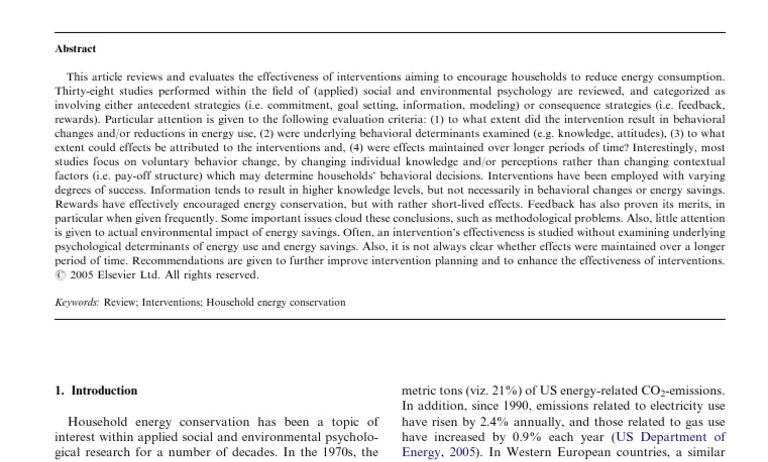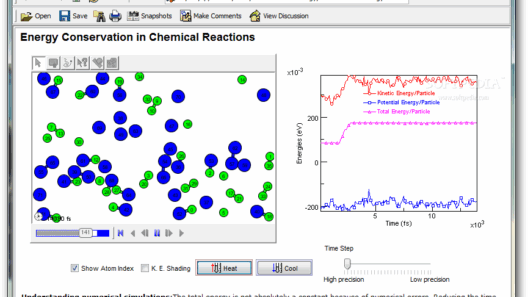Energy conservation is a pressing issue in the contemporary landscape. As we grapple with climate change, resource depletion, and economic fluctuations, understanding household energy consumption becomes paramount. Various studies have explored effective household energy conservation strategies. This article delves into the findings of these studies, elucidating what works, why it works, and how these insights can be implemented to foster a culture of energy conservation.
To embark on this exploration, it is crucial to define energy conservation unequivocally. Energy conservation entails efforts made to reduce energy consumption through using less energy service or improving energy efficiency. This intricate dance between necessity and innovation opens up a vista of opportunities for households to engage in sustainable practices.
Household energy usage accounts for a substantial portion of global energy consumption. Within this framework, different strategies have emerged, ranging from behavioral modifications to technological enhancements. A multifaceted approach is necessary to truly pivot toward energy conservation within domestic settings.
One of the cardinal findings across numerous studies is the significance of behavioral interventions. In myriad settings, initiatives aimed at modifying habitual behaviors demonstrate remarkable efficacy. For example, simple reminders about energy usage—via stickers on appliances or digital notifications—have been shown to prompt individuals to reduce consumption. This phenomenon occurs largely due to what psychologists term the “nudge effect.” When individuals are subtly encouraged to reconsider their choices, they are more likely to engage in energy-saving behaviors.
Moreover, the role of social norms cannot be overstated. Households often look to their peers for cues on appropriate behaviors. In communities where energy conservation is prioritized, individuals tend to follow suit, thus amplifying the effect. Programs that inform households about their energy consumption compared to neighbors can foster a sense of competition, motivating them to lower their usage. This peer-driven dynamic gives rise to a collective ethos of conservation.
Technology also plays a pivotal role in the conservation narrative. Smart home devices, including programmable thermostats and energy-efficient appliances, have revolutionized energy management. These devices can significantly curtail energy consumption without compromising comfort. For instance, programmable thermostats allow homeowners to set schedules, optimizing heating and cooling based on occupancy patterns. The integration of smart technology promotes greater awareness and control over energy usage and can yield substantial financial savings.
In tandem with technological advancements, the importance of education cannot be overlooked. Studies illustrate that households equipped with knowledge about energy consumption tend to make more conscientious decisions. Workshops, informational pamphlets, and interactive seminars can bolster understanding, making the abstract concept of energy conservation tangible. When individuals comprehend the implications of their energy use, they are more likely to engage in corrective actions.
Furthermore, the psychological component of energy conservation warrants attention. The concept of perceived behavioral control—how empowered individuals feel about their ability to influence their energy consumption—significantly impacts conservation efforts. Households that feel capable of enacting change are more likely to explore and implement energy-efficient options. Providing households with tools and resources, such as energy audits and personalized recommendations, can enhance this sense of control and motivation.
In considering the efficacy of various strategies, it is essential to identify the nuances of demographic factors. Different households exhibit varying degrees of responsiveness to conservation measures. For instance, families with children may be more inclined to adopt energy-saving behaviors when framed as a communal effort to protect the environment for future generations. Conversely, single-person households may need performance-based incentives, such as cost savings or rebates on energy-efficient purchases, to spur conservation efforts.
Government policies and incentives also shape the landscape of household energy conservation. In many communities, tax credits, subsidies, and rebates for energy-efficient upgrades serve as powerful motivators for homeowners to make environmentally conscious decisions. These fiscal strategies inject economic viability into the conservation narrative, fostering a symbiotic relationship between personal financial benefit and collective environmental stewardship.
Despite the myriad strategies available, the collective impact of these efforts hinges on sustained engagement. It is critical to close the loop by continually reinforcing the messages of energy conservation. Regular updates, progress reports on energy use, and ongoing community involvement ensure that momentum is maintained. In many instances, the introduction of gamification—making energy savings a competitive game—fosters ongoing interest and commitment within households.
As we assess the repertoire of household energy conservation strategies, it becomes evident that no single approach stands in isolation. Rather, a holistic strategy combining behavioral nudges, technological innovations, educational initiatives, and supportive policies creates an optimized framework for energy conservation. By recognizing the complexity of these relationships, households can be better equipped to navigate their energy consumption, paving the way for a sustainable future.
In conclusion, the promise of household energy conservation lies in a multifaceted and collaborative approach. By shifting perspectives and embracing innovative strategies, households can contribute significantly to the broader narrative of environmental sustainability. It is this alignment of individual actions with communal goals that holds the key to a future where energy conservation becomes second nature—a legacy for generations to come.








